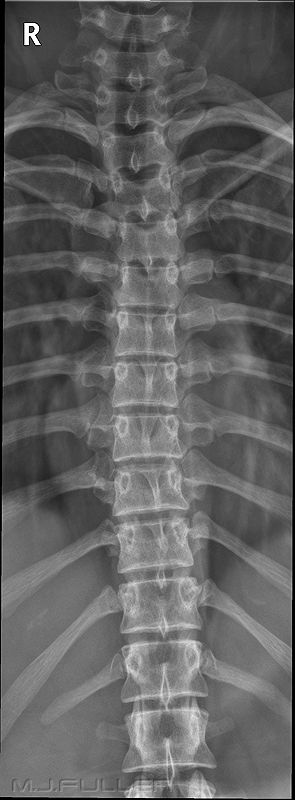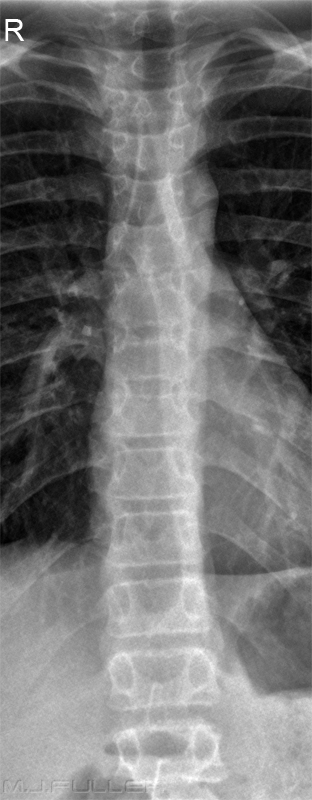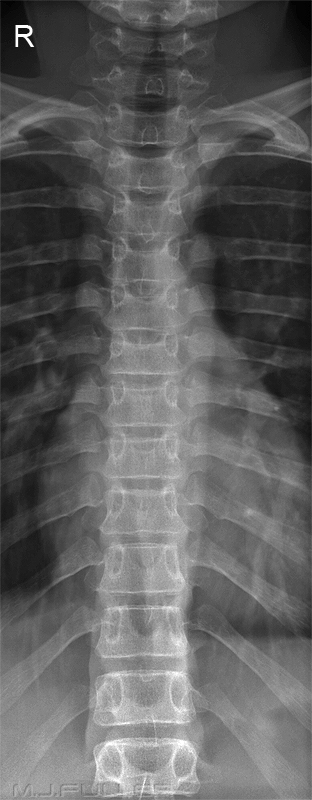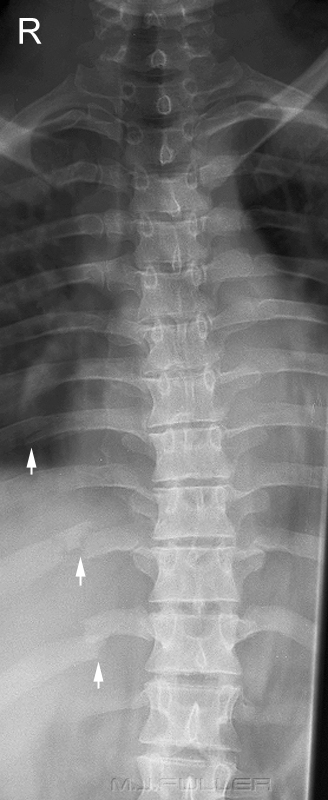AP Thoracic Spine Breathing Technique
Jump to navigation
Jump to search
Introduction
The breathing technique would be familiar to most radiographers when utilised to blur lung markings which would otherwise obscure bony detail when performing the lateral thoracic spine view. The breathing technique can also be used to good effect on the AP thoracic spine projection for the same reasons that it is applied to the lateral projection.
Technique
The breathing technique combines a long exposure with gentle patient breathing.
Images
| | This image was taken on a DR imaging system. The AP thoracic breathing technique provides excellent bony detail of the thoracic spine bony anatomy including clear visualisation of the pedicles. |
Case Study 1
This 13 year old boy presented to the Emergency Department following a fall from his pushbike. He was found to have a tender thoracic spine and was referred for thoracic spine radiography
| Short Exposure Time Technique | Breathing Technique |
| This image utilized the same kVp and mAS but with a longer exposure time of 1.6 seconds. |
The patient had sustained a minor crush fracture of the body of T8 which was not well demonstrated on the AP image.
Case Study 2
This patient presented to the Emergency Department following a motor vehicle accident.
| | |
| The AP thoracic spine image demonstrates multiple posterior rib fractures on the right (arrowed). | |
| |
Discussion
The breathing technique can be applied to any bony anatomy where patient breathing can be used to advantage to deliberately cause movement unsharpness of soft tissue anatomy.



